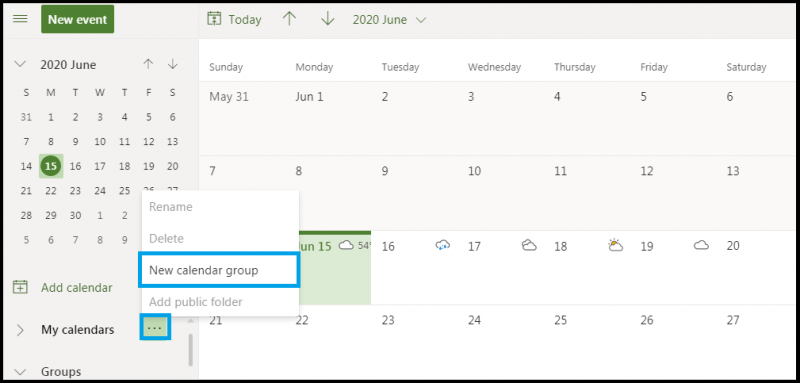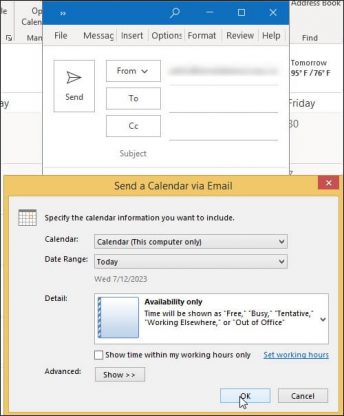Workplace 365 Group Calendar Vs Shared Calendar
workplace 365 group calendar vs shared calendar
Associated Articles: workplace 365 group calendar vs shared calendar
Introduction
With enthusiasm, let’s navigate by the intriguing subject associated to workplace 365 group calendar vs shared calendar. Let’s weave fascinating data and supply recent views to the readers.
Desk of Content material
Workplace 365 Group Calendar vs. Shared Calendar: Selecting the Proper Device for Collaboration

Within the trendy office, efficient collaboration is paramount. Calendaring performs an important position on this course of, facilitating scheduling, communication, and general staff effectivity. Microsoft 365 affords two major choices for shared calendaring: Workplace 365 Teams calendars and shared mailboxes with shared calendars. Whereas each permit a number of customers to view and handle appointments, they differ considerably of their performance, integration, and general function. Selecting the best instrument relies upon closely on the particular wants and construction of your staff or venture. This text delves into an in depth comparability of Workplace 365 Group calendars and shared calendars, highlighting their strengths and weaknesses that can assist you make an knowledgeable determination.
Workplace 365 Group Calendars: Collaboration Central
Workplace 365 Teams are a robust collaboration hub, integrating varied Microsoft 365 companies beneath a single, simply manageable entity. The group calendar is a core part of this integration, seamlessly connecting with different options like e mail, recordsdata, and conversations. This built-in method makes it excellent for groups engaged on shared tasks or requiring ongoing communication and coordination.
Key Options and Advantages:
- Unified Collaboration Platform: The group calendar shouldn’t be an remoted entity however half of a bigger ecosystem. This permits for simple context switching between calendar occasions, associated emails, shared paperwork, and ongoing conversations. For instance, clicking on a calendar occasion may immediately present associated e mail threads or linked recordsdata.
- Automated Membership Administration: Including or eradicating members from the group routinely updates the calendar entry permissions. This simplifies administration and ensures solely approved people can view or modify appointments.
- Simplified Scheduling: Scheduling conferences throughout the group calendar is streamlined. Members are simply added based mostly on group membership, lowering the guide effort concerned in inviting people individually.
- Exterior Sharing Capabilities: Whereas primarily designed for inside collaboration, Workplace 365 Group calendars could be shared externally with particular people or teams, granting them view-only or enhancing entry as wanted. This permits for collaboration with exterior companions or shoppers.
- Model Historical past: Whereas not as strong as devoted model management techniques, group calendars supply some extent of model historical past, permitting you to see earlier adjustments and probably revert to older variations if needed. That is notably helpful in figuring out scheduling conflicts or unintentional modifications.
- Integration with Microsoft Groups: The seamless integration with Microsoft Groups additional enhances collaboration. Conferences scheduled within the group calendar could be simply accessed and joined by Groups, offering a richer collaborative expertise.
- Constructed-in Communication Instruments: The group itself gives channels for communication, permitting for fast discussions associated to occasions or scheduling adjustments. This reduces reliance on separate communication platforms.
Limitations of Workplace 365 Group Calendars:
- Restricted Granular Management: Whilst you can handle entry by group membership, granular management over particular person permissions throughout the calendar itself is restricted. You can’t, for example, grant particular customers entry to solely sure components of the calendar.
- Useful resource Scheduling Complexity: Whereas doable, scheduling sources like assembly rooms or tools by a gaggle calendar could be much less simple in comparison with devoted useful resource scheduling options.
- Potential for Over-Collaboration: The built-in nature of Workplace 365 Teams can generally result in data overload, particularly in giant teams with frequent updates and discussions.
Shared Mailbox Calendars: Targeted on Useful resource Administration and Delegation
Shared mailboxes, in distinction, primarily deal with useful resource administration and delegation. They provide a centralized location for managing appointments associated to a selected useful resource, resembling a shared tools, a staff inbox, or a common division calendar. Whereas they embody a shared calendar, their major perform is not staff collaboration in the identical means as Workplace 365 Teams.
Key Options and Advantages:
- Useful resource Administration: Shared mailboxes excel at managing sources. A number of people can schedule appointments associated to a shared useful resource, making certain availability and avoiding conflicts.
- Delegation of Duties: Full management and administration of the shared mailbox and calendar could be delegated to particular people, permitting for environment friendly process project and duty distribution.
- Granular Permission Management: Shared mailboxes supply extra granular management over permissions than Workplace 365 Teams. You possibly can assign completely different entry ranges (view-only, editor, and so on.) to particular person customers.
- Simplified Exterior Sharing: Sharing a shared mailbox calendar with exterior customers is comparatively simple, providing extra management over entry ranges than group calendars in some situations.
- Simplicity and Ease of Use: For fundamental scheduling and useful resource administration, shared mailboxes are sometimes simpler to arrange and handle than Workplace 365 Teams.
Limitations of Shared Mailbox Calendars:
- Lack of Built-in Collaboration Options: Shared mailboxes lack the built-in collaboration options of Workplace 365 Teams. There isn’t any direct connection to shared recordsdata, staff conversations, or different collaborative instruments.
- Separate Administration: Managing entry and permissions requires separate administration from different points of the group. This may be cumbersome for bigger organizations.
- Restricted Model Historical past: Model historical past is minimal, providing much less perception into previous calendar adjustments.
- No built-in communication channels: Communication associated to the shared calendar typically must occur by separate channels like e mail, which might result in disorganization.
Selecting the Proper Device: A Resolution Matrix
The optimum alternative between an Workplace 365 Group calendar and a shared mailbox calendar is determined by your particular wants. Contemplate the next elements:
| Characteristic | Workplace 365 Group Calendar | Shared Mailbox Calendar |
|---|---|---|
| Major Objective | Crew Collaboration | Useful resource Administration |
| Integration | Extremely Built-in | Restricted Integration |
| Collaboration | Wonderful | Restricted |
| Permission Management | Restricted Granularity | Excessive Granularity |
| Useful resource Scheduling | Average | Wonderful |
| Communication | Constructed-in | Requires Separate Channels |
| Exterior Sharing | Doable | Easy |
| Administration | Simplified | Extra Complicated |
State of affairs-Based mostly Suggestions:
- Venture Groups: Workplace 365 Group calendars are perfect for venture groups requiring ongoing collaboration, shared file entry, and built-in communication channels.
- Departmental Calendars: Shared mailboxes could be efficient for departmental calendars, particularly if granular management over entry and useful resource scheduling is paramount.
- Useful resource Reserving (Assembly Rooms, Gear): Shared mailboxes are typically most popular for useful resource reserving, providing higher management and integration with useful resource administration instruments.
- Exterior Collaboration (Restricted Scope): Each choices can work, however shared mailboxes may supply less complicated exterior sharing for particular eventualities.
- Giant Groups requiring Stricter Entry Management: Shared mailboxes may be preferable on account of their granular permission controls.
In the end, the only option is determined by your group’s particular wants and workflow. Rigorously assess your necessities and take into account the strengths and limitations of every choice earlier than making a call. In some circumstances, a mix of each approaches may be the best answer, using Workplace 365 Teams for core staff collaboration and shared mailboxes for managing particular sources or departmental scheduling. Thorough planning and understanding of the options of every choice will result in elevated effectivity and improved collaboration inside your group.








Closure
Thus, we hope this text has supplied invaluable insights into workplace 365 group calendar vs shared calendar. We hope you discover this text informative and helpful. See you in our subsequent article!